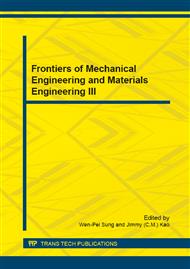p.567
p.572
p.578
p.583
p.587
p.592
p.597
p.601
p.607
The Effect of Attack Angle on the Performance of Wave Glider Wings
Abstract:
In this paper, on the basis of static stress analysis of the Glider wings, we compare different factors influencing the drag force converted by the glider wings and optimize them by comparing the simulation results with the calculation results. The results shows that the horizontal component force is reach maximum value when attack angle reaches 45°. After that the horizontal component force decreases as attack angle increases. The horizontal component force is gradually increased as the flow rate increases under same attack angle.
Info:
Periodical:
Pages:
587-591
Citation:
Online since:
January 2015
Authors:
Keywords:
Price:
Сopyright:
© 2015 Trans Tech Publications Ltd. All Rights Reserved
Share:
Citation:


